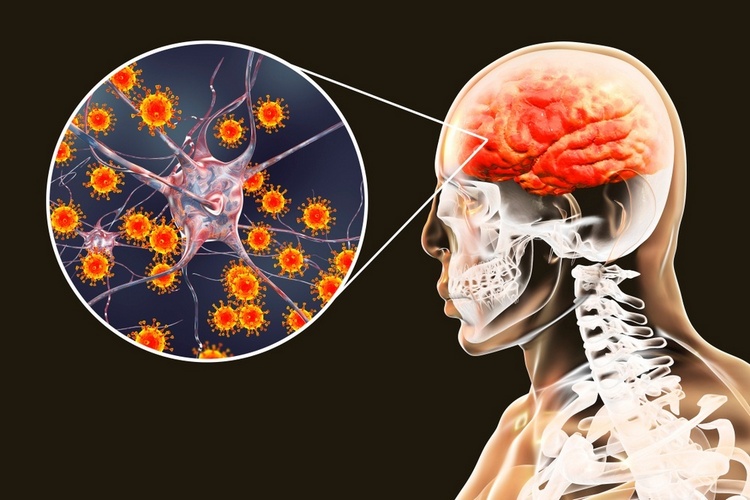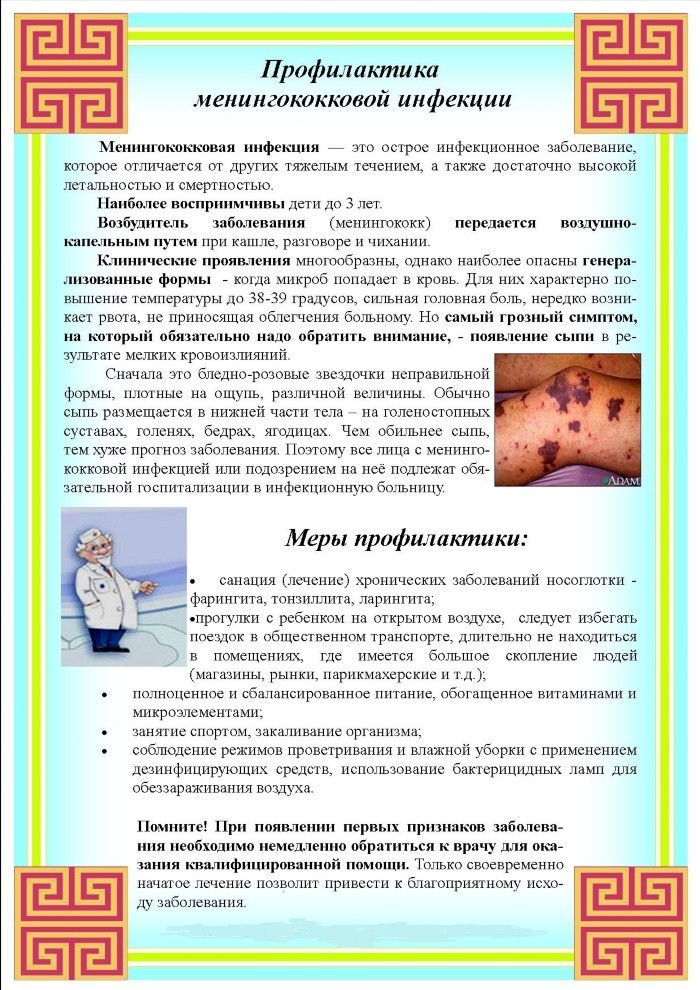
Meningococcal infection, in everyday life, is known as meningitis - an infectious disease. It manifests itself in the form of an acute disease of meningitis (inflammation of the brain membranes) or meningococcal sepsis (blood poisoning), and sometimes nasopharyngitis (inflammation of the nasal mucosa and pharynx).
The first signs of the disease are no different from the usual cold: runny nose, cough. Then three main symptoms appear: high body temperature up to 38-40 degrees, sudden bouts of vomiting and severe headache. Bad children have a sharp cry. The pose characteristic of such sick appears: they lie, throwing their head back, their legs are pursed to their stomach. When trying to tilt the head to the chest, the resistance, tension of the muscles of the neck and nape is noted. If the immune system is weakened, the microbe penetrates the blood and skin of the limbs, buttocks, and the side surfaces of the body, a rash appears a rash of an incorrect stir-colored purple-red color, which does not disappear when pressed. A severe form develops, often lightning speed, meningococcal sepsis with damage to the kidneys and adrenal glands, the occurrence of cerebral edema, infectious-toxic shock and fatal outcome.
With meningococcal infection, children aged 1-2 years old, who have insufficient immunity, are more likely, among adults - young people under 30 years old.
The incidence increases in the winter-spring period, which is facilitated by the crowding of people in public places, transport, insufficient stay in the fresh air.
Source of infection, transmission paths
Source of infectionThere may be a sick person and carriers of meningococcus. The most dangerous carriers (outwardly healthy people with microbes in the body), since 1800 media accounts for one sick. The danger of carriers of meningococcal infection is explained by the fact that they themselves do not get sick, but can infect others.
The path of transmission of infection- airborne droplets (with coughing, sneezing, conversation).
The causative agent - meningococcus is extremely unstable in the external environment, quickly dies when cooling and drying, with boiling - in 30 seconds. The microbe penetrates through the mucous membranes of the upper respiratory tract into the body of a healthy person with prolonged and close communication with the source of infection (they sleep nearby, take food, study, are brought up).
From the moment of infection to the onset of the disease passes from one to ten days. The patient is contrast for others from the first days of illness. The susceptibility to the disease is high.
Complications
After the disease, a complication can develop - deafness, in young children - deaf -mute, in rare cases - paralysis.
Prevention
- Avoid hypothermia.
- Limit trips with a child in public transport, do not visit spectacular events, shops and other places of mass location of people with your child, walk in the fresh air more.
- The adoption of water procedures, compliance with the regime of the day, a full and balanced diet contribute to the body's stability to infection.
- In order not to get sick and infect others, you need to get rid of chronic diseases of the nasopharynx - pharyngitis, tonsillitis, laryngitis.
- In the case of colds in adults, it is necessary to use gauze (disposable masks).
- Since the causative agent is unstable in the external environment, ventilation modes are relevant, wet cleaning using detergents, disinfectants, disinfection of air with bactericidal lamps (in children's institutions).
- All persons who communicated with the patient in the family, the team should be under medical supervision for 10 days, be examined for the carriage of meningococci.
Remember!
Self -medication with meningococcal infection is unacceptable!





























